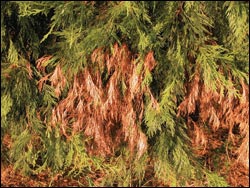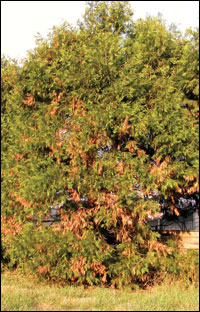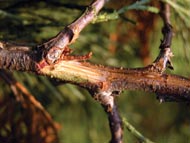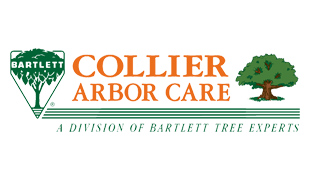|

Branches affected by Seiridium canker die all the way to the tips—unlike natural needle drop which occurs on the inner part of coniferous branches. 
Incense Cedar with Seiridium canker. Seiridium CankerDownload a PDF of this articlePlants AffectedIncense Cedar, Leyland Cypress, Juniper. Symptoms/DamageFoliage on affected branches yellows and turns brown in the spring. Small branches are usually infected first, and then larger ones will die. A sunken canker can be found on the branch below the infected foliage. Bark turns brown, and small fruiting bodies form in the cankered area. Drops of resin are frequently found in and at the sides of the canker. Larger trees may slowly decline from the cumulative effects of multiple cankers. Life CycleThe fungus is mainly transmitted by wind blown spores on rain wetted branches and foliage. Drought stressed trees seem to be the most susceptible. This is a fairly new disease that has been infecting Incense cedar trees in our region. The disease has been causing a severe branch dieback. Severities of dieback varies from tree to tree but upwards of 60% of branches are killed. The disease can infect many different kinds of trees like cedars, Leyland cypress and junipers but in our area it is mainly incense cedars. ManagementCulturalRemove and destroy affected branches 1 – 2 feet below
the infection or canker. Avoid water stress and wounding trees. Water trees doing drought periods and high temperatures. TreatmentTreat trees with a preventive fungicide when new growth begins to appear usually in March, April, and May and again in the fall. Treatments have been only partially effective. |

A sunken canker on branches is a telltale sign of Seiridium canker disease. |
|
Home |
Services |
The Arbor Advisor |
Garden Calendar |
About Us |
Fact Sheets |
Contact Us |
Site Map Collier Arbor Care Portland 503-722-7267 Vancouver (360) 693-6056 Site contents and design ©2013 Collier Arbor Care |





